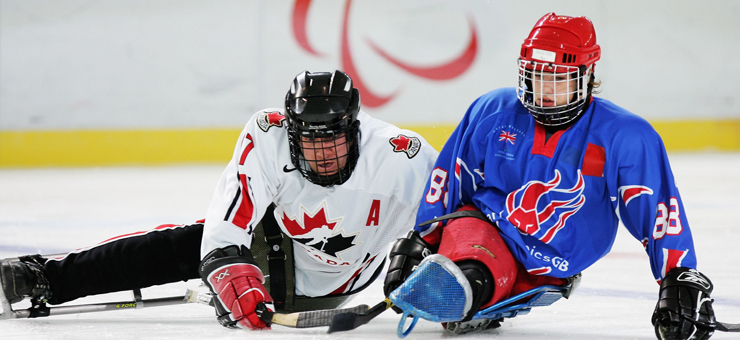Ice Sledge Hockey

Ice Sledge Hockey is the version of Olympic Ice Hockey for athletes with a lower limb impairment.
Britain’s Ice Sledge Hockey team did not qualify for the Paralympic Games in Vancouver, but the British side are now in development for Sochi. The team finished 4th in their group at the 2011 IPC Ice Sledge Hockey European Championships in Solleftea, Sweden in February 2011.
Eight teams competed in the Sledge Hockey event in Vancouver, but the USA and Canada performed excellently in the preliminary round, winning all three of their respective games. At the end of the round the USA topped the Group A table and Canada topped the Group B table, both with formidable goal differences, with Japan and Norway in the second places.
In a surprise semi-final result, however, the host nation was beaten by Japan, sending Japan through to the gold medal match against the USA. Canada went on to play Norway in the bronze medal match, which Norway won. Meanwhile in the gold medal match the USA, who went through the whole tournament without conceding a goal, kept a clean sheet and beat Japan 2-0 to take the gold.
Britain finished 7th at the Turin 2006 Paralympic Winter Games.
- First year at a Paralympic Games:
- Lillehammer 1994
- Brief history:
- Ice Sledge Hockey first featured at the Lillehammer 1994 Paralympic Games and has quickly become one of the most popular attractions for spectators at the Winter Games
- Eligible impairment groups:
- All athletes who have an impairment of a permanent nature in the lower part of the body
- Vancouver medal table:
-
1 - USA
2 - Japan
3 - Norway - Did you know:
- In 2009 it was determined that nations could allow female athletes to play
Rules:
Many of the rules and regulations of the sport are the same as Ice Hockey; the main difference is in the technical equipment used.
Athletes use specially designed sledges fitted with two blades to propel themselves across the ice and have two playing sticks, which have a double function: they are used for pushing, much like a ski-pole in Cross-Country Skiing, and to control and shoot the puck.
The game is comprised of three periods, each 15 minutes in length. Six players are allowed on the ice at any time and a total of 15 players make up a team.
Classification:
Eligibility is based on athletes having an impairment of a permanent nature in the lower part of the body which means they are not able to do non-disabled skating and consequently play non-disabled Ice Hockey.



Comments
The BPA would like to see lots of people engaging with the news and information that we post on our website. If you would like to participate in the conversation, however, please ensure you comply with the House Rules. The BPA reserves the right to remove posts which do not comply with these Rules or which are considered irrelevant to the post.